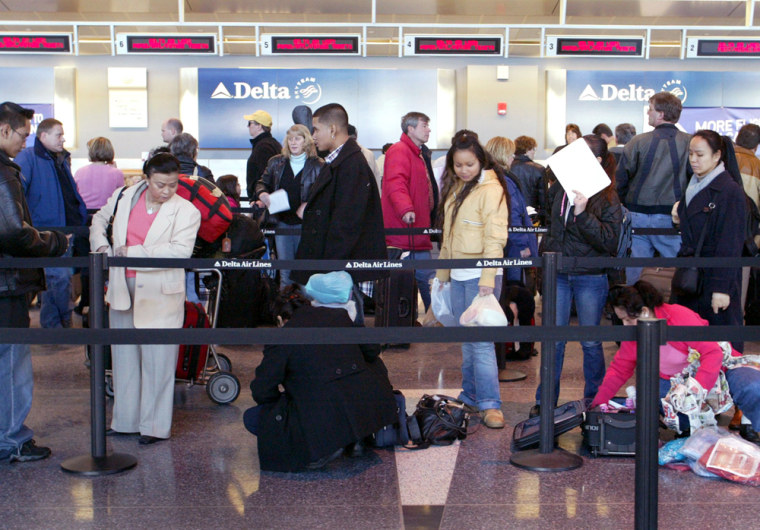A reduction in U.S. airlines' available seats coupled with a strong economy promises to pack planes this summer, making flights dismal for passengers but lucrative for an industry struggling to offset surging fuel costs.
"I definitely think capacity is going to be tight this summer. Demand is going to be strong," said Standard & Poor's equity analyst Jim Corridore. He said load factors — the percentage of available seats sold — probably will approach 90 percent in the summer months.
That compares with an average load factor just above 80 percent in the summer of 2005, he said.
Data from the Air Transport Association, an airline industry trade group, show the number of seats on domestic flights declined by 1.7 percent from March 2005 to March 2006. That contrasts with a capacity increase on international flights of 4.9 percent during the same time period.
The domestic capacity reductions were largely the result of cutbacks by traditional carriers and the demise of low-cost carrier Independence Air in January, the ATA said.
In addition, bankrupt carriers Delta Air Lines and Northwest Airlines canceled leases on dozens of planes, further thinning out seat availability.
Major carriers, meanwhile, have been shifting their capacity from domestic routes to more lucrative international ones.
Fewer seats in the sky means carriers have more power to raise fares. Ticket prices have been inching higher since last year. The ATA says prices are up more than 10 percent year-over-year.
Still, they remain down 16 percent from peaks achieved before the Sept. 11, 2001, terror attacks torpedoed demand.
U.S. airlines, some of which have already been struggling with late arrivals, will be put to the test this summer as they move more passengers through their systems with fewer resources, said Gerald Bernstein, an airline consultant at the Velocity Group.
'Misery index' seen rising
He noted that air passenger traffic is up 7 to 8 percent over last year and that many carriers have cut payrolls as part of labor cost reductions. This scenario is likely to result in delays and frustration among travelers, he said.
"You always run that risk with high load factors," Bernstein said. "It's what's called the misery index. I think the misery index will be up this summer."
But one major airline said this week that it won't shy away from packing its aircraft full, even amid reports of jostling for space in overhead bins and short-tempered passengers.
"The business we're in is filling our airplanes, and we're going to fill as many of those seats we can," said Thomas Horton, Chief Financial Officer at AMR Corp's American Airlines, the No. 1 U.S. carrier, Wednesday.
One expert, however, said it's easy for airlines to say now that they don't intend to add domestic capacity, but the temptation to woo passengers willing to pay higher fares will be too much. Major carriers may well boost available seats anyway, said Chris Lozier, equity analyst at Morningstar.
"Every summer it's the high point and (airlines) chase passengers like crazy," Lozier said. "The urge to chase the incremental passenger is going to be too great for many of them resist."
